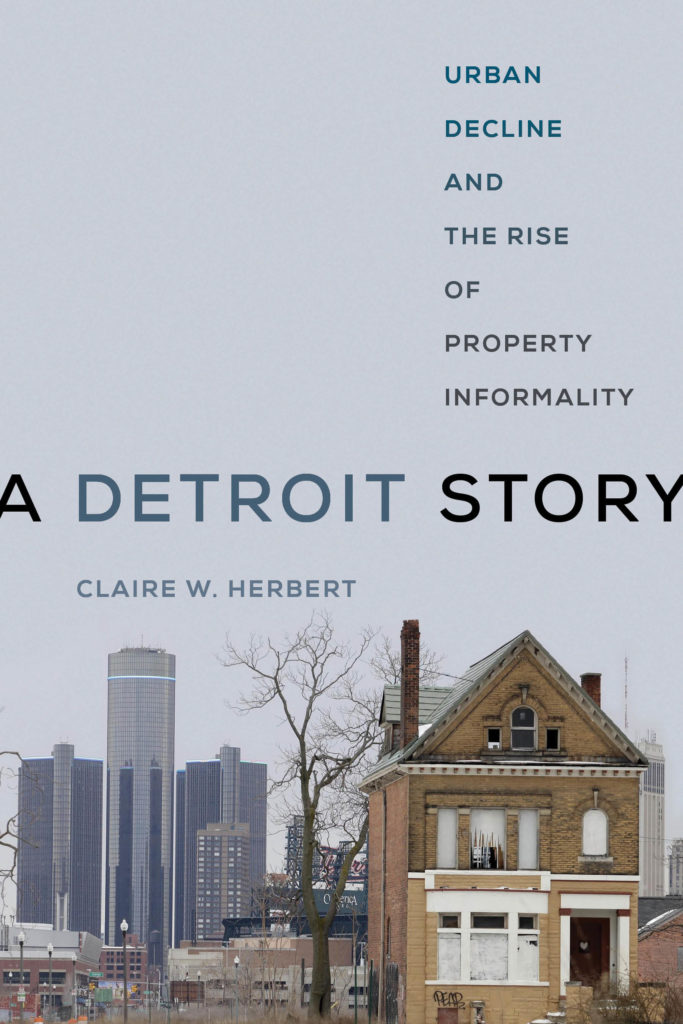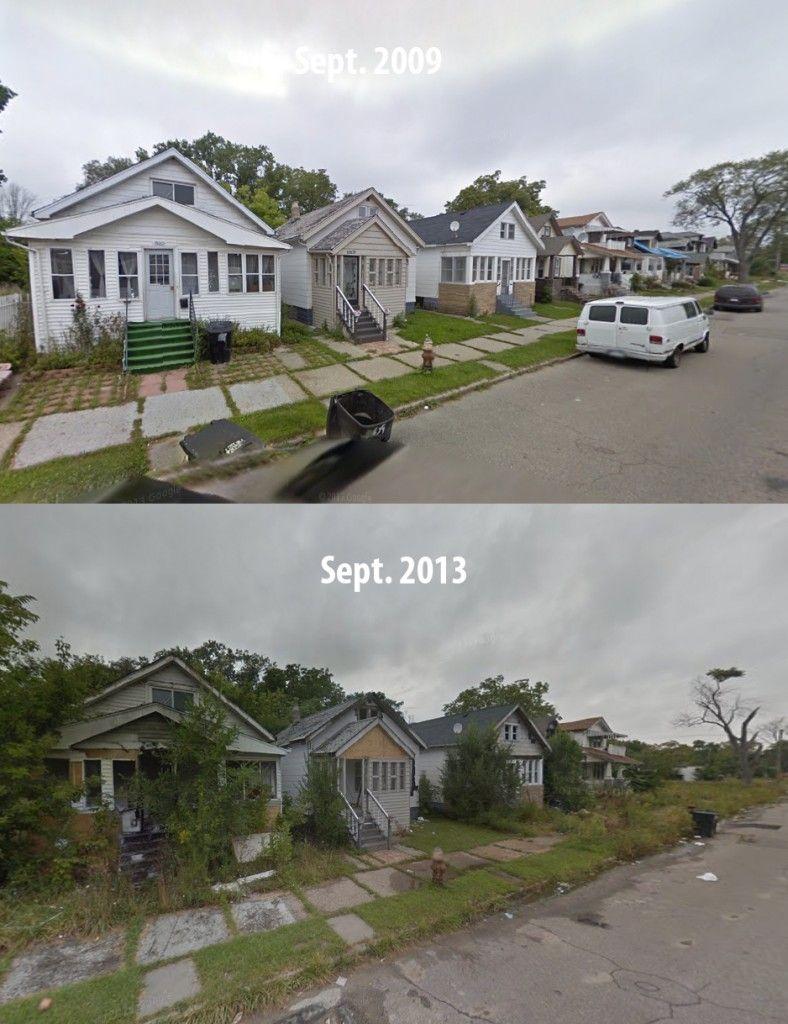
In A Detroit Story: Urban Decline and the Rise of Property Informality, Herbert assesses the use of urban space in Detroit. Herbert paints a picture of the ways the urban areas in Detroit are utilized. Her understandable and illustrative descriptions of urban decline in Detroit enable the reader’s insight into the perspectives of a multitude of Detroit residents.
Detroit is a declining city: this can be attributed to a multitude of economic, demographic, political, and spatial shifts that have taken place. These shifts have taken the forms of suburbanization and white flight, and are connected to institutional racism. As people have continued to leave the city, issues like property abandonment, crime, and unemployment increase. In declining cities, where suburbanization is taking place, white flight is common. White individuals leave the declining cities and move into the suburbs and businesses leave with them. This creates racial segregation between largely poor, marginalized black cities, and middle to upper class white suburbs.
Property informality is a central idea in this book. Herbert defines it as practices that are denied the protection of property related laws, and have achieved social legitimacy, despite their illegality. In particular, she emphasizes the informality of squatting. She applies Henri Lefebvre’s term ‘appropriation’ (The Production of Space, Lefebvre 165), which is a claim to urban space, contingent upon utility and social factors. Herbert differentiates appropriators into three categories, Necessity Appropriators, Routine Appropriators, and Lifestyle Appropriators. Each group uses the urban space and conditions of Detroit for different reasons. In the case of a Necessity Appropriator, they squat in these houses for survival and on the other side of the spectrum, Lifestyle Appropriators do this for a sense of adventure. Routine Appropriators sit in the middle, they use appropriation in order to get by. The image is a demonstration of what became of the many houses following the economic collapse of Detroit. Many of the abandoned houses were knocked down, and a large number of the ones that were left are abandoned. Herbert discusses how this is a difficult problem: given that there are not enough citizens, the municipal government struggles to gain the resources through taxation to address these issues.

Appropriators began to move into these homes, using them as their own, and maintaining them in the ways that they can afford. Herbert interviews Detroit residents on their opinions of squatting and discusses how many of these residents do not mind if a squatter is living next to them, and some even assert that squatters can be beneficial if they care for the house and property. Herbert discusses how the city tried to address the abandonment of houses, discussing how the Detroit Land Bank Authority sold houses for $500-$1000 dollars. Herbert asserts that this would increase ownership among Lifestyle Appropriators, who can afford to purchase and renovate these homes. This still leaves the vast majority of Necessity Appropriators and Routine Appropriators unable to legally obtain the houses that they are squatting in. Additionally, new anti-squatting laws were passed, giving more power to property owners, and less to squatters and enabled the use of force to evict squatters. This change mainly impacts Necessity and Routine Appropriators. Many appropriators partake in scrapping or salvaging. Scrapping takes place when you take materials to sell for income; salvaging differs from this, it occurs when materials are taken for personal use. For Necessity Appropriators, scrapping can be very risky and for subsistence, whereas for Lifestyle Appropriators, this is done more leisurely and not to fulfill basic needs. A state bill was put into place to hinder the metal scrapping taking place in Detroit, hoping that it would lessen neighborhood deterioration. Herbert elaborates on how this disproportionately impacts the Necessity Appropriators and Routine Appropriators, who already face the greatest risks. A Detroit Story shows how some of the inequalities coded into laws and regulations disproportionately affect disempowered individuals. Describing the disproportionate effects of changes in local regulation and law on Routine, Necessity, and Lifestyle Appropriators, Herbert illustrates how the underlying forces of inequality created an abandoned urban environment ripe for appropriators, then punished some of those who choose to stay.
- Danielle Tannard
Neavling, S. (2014, June 6). Up close: 8 most abandoned neighborhoods in Detroit. Motor City Muckraker. Retrieved February 22, 2022, from http://motorcitymuckraker.com/2014/06/06/up-close-8-most-abandoned-neighborhoods-in-detroit/
Lefebvre, Henri. 1991. The Production of Space. Translated by Donald Nichol- son-Smith. Oxford: Blackwell Publishers Ltd.
